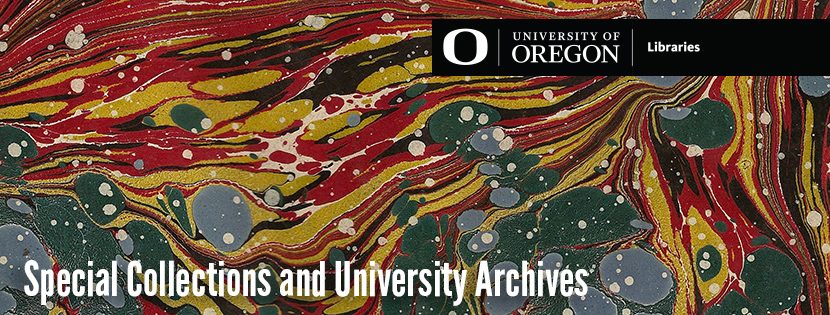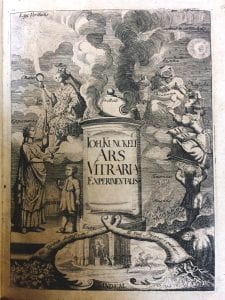New Acquisition | Ars vitraria experimentalis oder Vollkommene Glaßmacher-Kunst (The Art of Perfect Glassmaking)
The Rare Books Collection in Special Collections and University Archives has received a fine addition of Ars vitraria experimentalis, one of three chief works by the German court alchemist, pharmacist, and glassmaker Johann Kunckel von Löwenstern (approx. 1630-1703).
Born sometime around 1630, Johann Kunckel was the son of a master glassmaker and learned the art and the chemistry of glassmaking from his father and other glassmakers. In 1670, Kunckel began his alchemical career in Dresden working on the problem of transmuting metals. In 1677, Kunckel left Saxony, having never been paid the salary promised by his employer, Elector Johann Georg II. The next phase of his career took place in Brandenburg, where he directed the laboratory and glassworks there as part of the country’s economic initiative to process domestic raw materials and export as many of the finished products as possible. Brandenburg had an effective ban on imported goods, and the Elector Friedrich Wilhelm stressed the importance of high-quality glass production. Kunckel succeeded in this area through his technical improvements to the process of making ruby (red glass) and his rigorous work Ars vitraria experimentalis, which included his translation and editing of the few previously available specialist works on glassmaking, as well as all of his own knowledge on the subject.
Kunckel’s scientific legacy includes the discovery of how to make artificial ruby through the incorporation of the pigment Purple Cassius. Recent scholarship points out the industrial impacts of his discovery: “the still extant ruby glasses show that its production increased instantly after Kunckel’s invention, arrived at its peak probably in the 1690’s and slowly declined until the 1740’s” (Horn et al).
About the Text
This volume is a quarto-sized second edition, published in Frankfurt and Leipzig by Christoph Riegel in 1689—the original date of the work was 1679. Kunckel largely based his text on L’arte vetraria distineta in libri sette (1612) by Antonius Neri, which had revealed the secrets of Venetian glassmaking. Ars vitraria experimentalis was the first of its kind in the German-speaking world and served as an industry standard for European glassmakers for a hundred years. The volume includes the author’s comments on Neri’s recipes, all of which he tested himself. While the fact that Kunckel’s work has never been translated into English presents a challenge to researchers not well-versed in German, part of its intrigue lies in the 26 engravings it features. These depict the glass ovens and the buildings that housed them, the tools used for blowing and shaping glass, and images of the glassmaking process at various stages.
This text serves as a useful source for anyone studying the history of glassmaking and the chemical properties of glass. Additionally, it may be of interest to researchers who wish to consider the relationship between art, chemistry, the domestic production of goods, and Germany’s economic and political history following the Thirty Years’ War. But perhaps the most surprising and intriguing feature of this work, given its focus on the chemical properties of glass, is the prominence of architectural drawings and diagrams: some depict glass ovens and glasshouses, and others appear more abstract. These buildings appear to deviate from the exuberant style of Germany’s architecture during the Baroque period, but they also display certain Baroque elements such as concave walls, an overall dynamic sense of space, and symmetry. These may be of interest to researchers interested in 17th century German architecture and art history. Whether or not these engravings were commissioned specifically for Kunckel’s text, they would have bolstered readers’ perceptions of its author as a true insider in the world of glassmaking—both the master overseer of his trade as well as the guardian of its technical secrets.
—Abigail Johnson, Social Media Student Assistant




